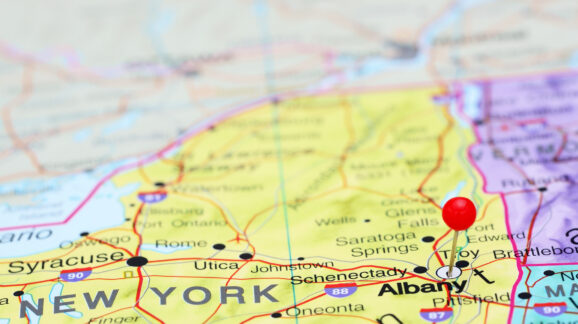The power of proceduralism: Lessons from New York’s Uniform Procedures Act

Photo Credit: Getty
Within the labyrinth of environmental regulation, good intentions often pave the way to bureaucratic nightmares. But amidst the tangle of red tape, there occasionally emerges a beacon of clarity. Such is the case with New York State’s Uniform Procedures Act (UPA), a little-known statute that offers valuable lessons for streamlining government processes.
While New York’s overall approach to environmental permitting is far from perfect, the UPA stands out as a model worth emulating. In a new policy brief from the Competitive Enterprise Institute, “Empire State of Mind: Curing New York State’s environmental permitting hangover,” I explore this hidden gem of regulatory reform and extract insights that could benefit states across the nation.
Enacted in 1977, New York’s UPA offers a case study on the benefits of proceduralism. Good procedures, when properly designed and implemented, can ensure positive outcomes most of the time. Conversely, when government goes awry, it’s often because procedures and the incentives they create have become misaligned with policy goals.
The UPA standardizes procedures for environmental permit applications across a wide range of programs within the state’s Department of Environmental Conservation (DEC). Its key features include:
- Consistent procedures and timeframes for reviewing permit applications;
- Distinction between minor and major projects, with streamlined processes for minor projects;
- Structured public notice and comment processes;
- Clear procedures for determining when public hearings are necessary; and
- Specified timeframes for completeness determinations and final permit decisions
These features offer several benefits. First, the UPA creates a predictable regulatory environment, reducing uncertainty for businesses and other permit applicants. The distinction between minor and major projects allows the DEC to focus its resources on projects with potentially significant environmental impacts. Meanwhile, standardized public input processes ensure community voices are heard without necessarily allowing public participation to become a tool for obstruction.
Perhaps most importantly, the UPA’s permit decision deadlines (45 days for minor projects, 90 days for major projects without a hearing) provide applicants with a promise of timely action. This helps limit prolonged regulatory uncertainty that can stifle economic development.
Of course, the UPA isn’t perfect. Its implementing regulations are lengthy, running about 70 pages. Additionally, the DEC retains discretion over when an application is deemed complete, which can affect when the clock starts ticking on decision deadlines.
There’s also room for improvement. The UPA should be expanded to cover permitting decisions at other state agencies, not just the DEC. This would further streamline the regulatory process across New York’s government.
It’s important to note that while the UPA offers a model worth considering, New York’s overall environmental permitting process is far from ideal. The state’s State Environmental Quality Review Act (SEQR) is a prime example of how procedural laws can go wrong. SEQR creates open-ended review processes that introduce significant uncertainty for project applicants and often pile on a duplicate layer of review alongside other environmental statutes.
The contrast between the UPA and SEQR illustrates an important point: procedural laws can create very different regulatory environments, even within the same state. While the UPA creates certainty through clear procedures and timelines, SEQR introduces uncertainty through its open-ended nature and numerous opportunities for obstruction and litigation.
As states consider reforming their own environmental permitting processes, New York’s UPA offers some valuable lessons. Its core principles of consistency, timeliness, and structured public participation create a more hospitable and predictable business environment. By adopting similar approaches, other states could streamline their own regulatory processes without sacrificing environmental protection or public input.
In an era where regulatory reform is increasingly crucial for economic growth and environmental progress, New York’s UPA stands out as an example of good proceduralism. It’s a reminder that sometimes the key to better governance lies not in handing power over to wise men, but in carefully crafted procedures that align incentives with desired outcomes.
Read the whole study here.